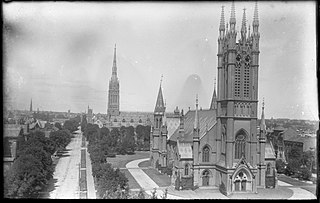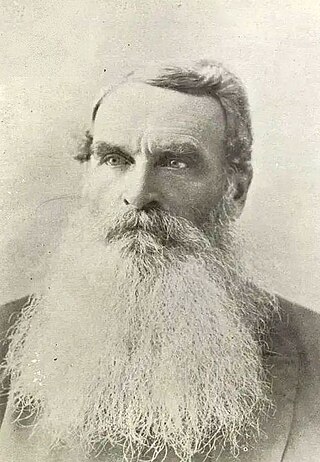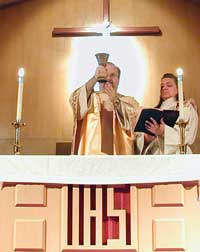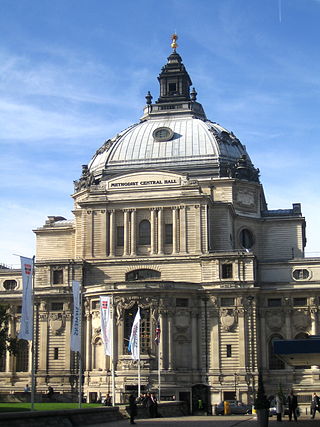| Part of a series on |
| Methodism |
|---|
 |
| |
This list deals with those who are notable in the history or culture of all Methodist churches. For other Methodists who are not notable in Methodist history or culture, see Category:Methodists.
| Part of a series on |
| Methodism |
|---|
 |
| |
This list deals with those who are notable in the history or culture of all Methodist churches. For other Methodists who are not notable in Methodist history or culture, see Category:Methodists.
Methodism, also called the Methodist movement, is a Protestant Christian tradition whose origins, doctrine and practice derive from the life and teachings of John Wesley. George Whitefield and John's brother Charles Wesley were also significant early leaders in the movement. They were named Methodists for "the methodical way in which they carried out their Christian faith". Methodism originated as a revival movement within Anglicanism originating out of the Church of England in the 18th century and became a separate denomination after Wesley's death. The movement spread throughout the British Empire, the United States and beyond because of vigorous missionary work, and today has about 80 million adherents worldwide.
The Methodist Episcopal Church (MEC) was the oldest and largest Methodist denomination in the United States from its founding in 1784 until 1939. It was also the first religious denomination in the US to organize itself nationally. In 1939, the MEC reunited with two breakaway Methodist denominations to form the Methodist Church. In 1968, the Methodist Church merged with the Evangelical United Brethren Church to form the United Methodist Church.
The Holiness movement is a Christian movement that emerged chiefly within 19th-century Methodism, and to a lesser extent influenced other traditions such as Quakerism, Anabaptism, and Restorationism. The movement is historically distinguished by its emphasis on the doctrine of a second work of grace, which is called entire sanctification or Christian perfection. Churches aligned with the holiness movement additionally teach that the Christian life should be free of sin. For the Holiness movement, "the term 'perfection' signifies completeness of Christian character; its freedom from all sin, and possession of all the graces of the Spirit, complete in kind." A number of evangelical Christian denominations, parachurch organizations, and movements emphasize those beliefs as central doctrine.
A Methodist local preacher is a layperson who has been accredited by the Methodist Church to lead worship and preach on a frequent basis. With separation from the Church of England by the end of the 18th century, a clear distinction was recognised between itinerant preachers and the local preachers who assisted them. Local preachers have played an important role in Methodism since the earliest days of the movement, and have also been important in English social history. These preachers continue to serve an indispensable role in the Methodist Church of Great Britain, in which the majority of church services are led by laypeople. In certain Methodist connexions, a person becomes a local preacher after obtaining a license to preach. In many parts of Methodism, such as the Allegheny Wesleyan Methodist Connection, there are thus two different tiers of ministers—licensed preachers and ordained elders.
The Primitive Methodist Church is a Methodist Christian denomination within the holiness movement. It began in England in the early 19th century, with the influence of American evangelist Lorenzo Dow (1777–1834).
The Methodist Church of Great Britain is a Protestant Christian denomination in Britain, and the mother church to Methodists worldwide. It participates in the World Methodist Council, and the World Council of Churches among other ecumenical associations.

The Bible Christian Church was a Methodist denomination founded by William O'Bryan, a Wesleyan Methodist local preacher, on 18 October 1815 in North Cornwall. The first society, consisting of just 22 members, met at Lake Farm in Shebbear, Devon. Members of the Church were sometimes known as Bryanites, after their founder.

Jabez Bunting was an English Wesleyan Methodist leader and the most prominent Methodist after John Wesley's death in 1791.
The Methodist New Connexion, also known as Kilhamite Methodism, was a Protestant nonconformist church. It was formed in 1797 by secession from the Wesleyan Methodists, and merged in 1907 with the Bible Christian Church and the United Methodist Free Churches to form the United Methodist Church. In Australia, it joined with those plus the Wesleyan Methodist Church and Primitive Methodist Church as the Methodist Church of Australasia in 1902.

The Methodist Church was the major Methodist denomination in Canada from its founding in 1884 until it merged with two other denominations to form the United Church of Canada in 1925. The Methodist Church was itself formed from the merger of four smaller Methodist denominations with ties to British and US Methodist denominations.

William Taylor (1821–1902) was an American Methodist missionary reverend, who in 1884 was elected by the Methodist General Conference as bishop over the Methodist missions in Africa for the Methodist Episcopal Church. Taylor spent most of his adult life performing missionary work around the world. He began his missionary service when he was assigned by the Conference to establish missions in California and provide services in San Francisco during the California gold rush of 1849. His other missionary work involved the establishment of self-supporting missions in various countries about the world, bringing him to England, Ireland, India, South America, Australia, New Zealand and Africa, all of which he wrote about in a number of publications. After many years serving as a Methodist missionary Taylor was elected Bishop of Africa. He has received acclaim and is noted for introducing Methodism through his missionary efforts to several countries around the world. Taylor is also credited for introducing the eucalyptus tree to California with seeds he gathered while serving as a missionary in Australia.
An annual conference is a regional decision-making body within various Methodist denominations. Conferences are a key characteristic of the connexional (connectional) system of government in Methodism. Annual conferences are composed primarily of the clergy members and a lay member or members from each charge. Each conference is a geographical division. In general, the smaller states in the United States hold one conference each, while larger states often include two or more conferences. Several annual conferences are held in other nations as well.

The Methodist Church of Southern Africa (MCSA) is a large Wesleyan Methodist denomination, with local churches across South Africa, Namibia, Botswana, Lesotho and Eswatini, and a more limited presence in Mozambique. It is a member church of the World Methodist Council.

An elder, in many Methodist churches, is an ordained minister that has the responsibilities to preach and teach, preside at the celebration of the sacraments, administer the church through pastoral guidance, and lead the congregations under their care in service ministry to the world.

The organisation of the Methodist Church of Great Britain is based on the principle of connexionalism. This means that British Methodism, from its inception under John Wesley (1703–1791), has always laid strong emphasis on mutual support, in terms of ministry, mission and finance, of one local congregation for another. No singular church community has ever been seen in isolation either from its immediately neighbouring church communities or from the centralised national organisation. Wesley himself journeyed around the country, preaching and establishing local worshipping communities, called "societies", often under lay leadership. Soon these local communities of worshipping Christians formalised their relationships with neighbouring Methodist communities to create "circuits", and the circuits and societies contained within them, were from the very beginning 'connected' to the centre and Methodism's governing body, the annual Conference. Today, societies are better known as local churches, although the concept of a community of worshipping Christians tied to a particular location, and subdivided into smaller cell groups called "classes", remains essentially based on Wesley's societies.
Methodist views on the ordination of women in the rite of holy orders are diverse.

The history of Methodism in the United States dates back to the mid-18th century with the ministries of early Methodist preachers such as Laurence Coughlan and Robert Strawbridge. Following the American Revolution most of the Anglican clergy who had been in America came back to England. John Wesley, the founder of Methodism, sent Thomas Coke to America where he and Francis Asbury founded the Methodist Episcopal Church, which was to later establish itself as the largest denomination in America during the 19th century.

Samuel Warren (1781–1862) was a Wesleyan Methodist minister, who formed a breakaway group of "Warrenites", and in later life was an Anglican priest.
The history of Methodism in Sichuan began in 1882 when missionaries began to arrive from the United States. Methodists founded or helped found several colleges, schools, and hospitals to aid in modernization and conversion efforts. Later, American Methodists were joined by missionaries from Canada. Methodism grew to become one of the two largest denominations of Protestant Christianity in the province by 1922, along with Anglicanism.